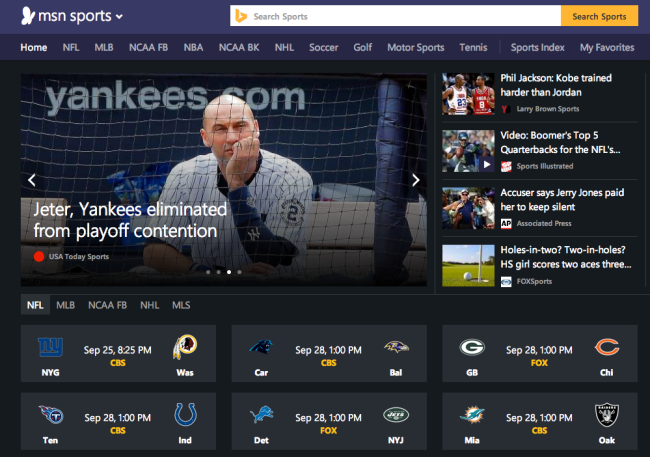A team of 40 Microsoft engineers in Dublin have been the driving force for a cutting-edge new sports section that adorns the new MSN and combines learning algorithms with active content curation.
Spanning 10 sections including sports, news, health and fitness, money, travel and video, the new MSN which goes live next Tuesday will gather information from thousands of publishers worldwide. A preview of the new site can be accessed here
Information ranges from the latest stats on over 200 global sports leagues, reviews of over 1.5m bottles of wine, 300,000 recipes to news stories hand-curated from over 1,000 news sites.
The Dublin team worked on the sports aspect of the project for over nine months to enable the release into 54 markets worldwide. The new sports section replaces the existing MSN-Fox sports site in the US.
The team also worked on the responsive design of the new MSN to ensure the service could be optimised across smartphones, tablets, laptops and PC.
Christian Jago-Byrne, Microsoft’s advertising country manager said that MSN is accessed by 1.1m people in Ireland.
“We’re very proud of the Irish involvement in creating this multi-screen experience. Our vision is to go beyond the traditional portal and create something that empowers consumers who wish to do more.”
The new MSN feature a ribbon along the top called the Me Bar that connects users to online services like Office, Outlook.com as well as Skype, OneNote, OneDrive, Xbox Music and Facebook.
The editor-in-chief of MSN Dominic Eames explained that the new MSN is a complete rebuild of MSN from the ground-up with responsive design at its core.

“Our work and personal lives are increasingly intermingled and the new MSN is a reflection of that. It’s not just about the Microsoft ecosystem, its about bringing people the news as well as having services like Twitter, Facebook and Skype on the same home page.
“People have complex and busy lives and the new MSN is a simple and easy-to-use experience with the best premium content from local and global sources.”
Eames said that editors are employed to hand-curate content for specific markets and verticals
“This is not a Flipboard-curated exercise, we want to showcase the latest and most relevant content to users.”
Eames said that personalization is a core aspect of the new MSN whereby users can – for example, if they are fans of Arsenal or the Boston Red Sox – re-engineer the sports page to bring relevant content to the team or league they are following.
Eames said that the new MSN currently works on desktop browsers as well as Windows phones but that new iOS and Android versions of MSN will be coming in a few months.
Irish nuances shaping the future of sports news

The 40-strong team that powered the new sports section of MSN are based out of Microsoft’s European Development Centre in south Dublin.
The leader of the team Jimmy Doyle, principle engineering manager, explained that many Microsoft technologies that are used around the world owe their origins to the work that is done in Dublin.
“We started growing the team last October and we stalked the world trying to get a diverse set of people. Now we have 40 people on the team from 13 nations.
“The core objective was to understand where sports as a business is going. We faced the task of trying to decide how many markets worldwide can we cover which is hard because sports from country to country offers a unique set of content experiences.
“My team is made up of design, development, testing and programme management and our responsibility on the tech front is to build the pipelines of data to power the rich data modules that include people’s favourites, algorithms and times of the day, for example. When you arrive at the sports section what’s the first thing you want to see? The scores from last night or the fixtures for tomorrow.
“A lot of work went into making sure we had the right sources, that everything worked when it was supposed to and there was a lot of detail in terms of design. We created iterations of all of the various features five to 10 times, tweaking and making sure they had all gone through user testing.”
The team’s hard work resulted in a compelling sports section that transcends multiple sports types, leagues, teams and personalities from across the world.
The experience can be best described as a cross between living and breathing real-time analytics based on the choices and behavior of the reader and good-old fashioned editorial decision-making.
“Analysing behavior and predicting and anticipating audience behavior is going to be a big part of the team’s work going forward and we expect to see the technology we created used across the rest of MSN.”
Soccer image via Shutterstock